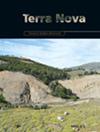碰撞造山带的热变化:从撒丁岛-华力西带的内陆-前陆过渡带看
IF 1.7
3区 地球科学
Q2 GEOSCIENCES, MULTIDISCIPLINARY
引用次数: 0
摘要
造山楔的结构和演化往往受到由缺乏诊断变质相的均质变质沉积岩形成的强烈变形的大规模推覆的阻碍。涉及占据大部分链的推覆构造或构造单元,重建碰撞带腹地-前陆过渡带的热结构是理解造山楔构造的关键。这项工作提供了在撒丁岛华力西带腹地-前陆过渡带的低品位变质岩中进行的碳材料拉曼光谱(RSCM)的新的热数据。获得的TRSCM强调了内部和外部尿布的温差,分别从约470–440°C到约440–380°C。我们提出,这两个推覆带都经历了具有不同TRSCM的同推覆绿片岩相变质作用,沿着两者之间的构造边界进一步加热,即Barbagia冲断层(BT),最后是推覆后叠加区域尺度褶皱,这使TRSCM的空间分布发生了变形,并驱动了当今的热构造。本文章由计算机程序翻译,如有差异,请以英文原文为准。
Thermal variation across collisional orogens: Insights from the hinterland–foreland transition zone of the Sardinian Variscan belt
Unravelling the architecture and evolution of orogenic wedges are often hampered by the presence of strongly deformed large‐scale nappes made by homogeneous metasedimentary rocks lacking diagnostic metamorphic phases. Involving nappes or tectonic units which occupy most of the chain, reconstructing the thermal architecture of the hinterland–foreland transition zone of collisional belts represents a key point to comprehend the orogenic wedge tectonics. This work provides new thermal data from Raman Spectroscopy on Carbonaceous Material (RSCM) carried out in the low‐grade metamorphic rocks of the hinterland–foreland transition zone in the Variscan belt of Sardinia. The obtained TRSCM highlighted a temperature difference, from ~470–440°C down to ~440–380°C, for the internal and external nappes, respectively. We propose that both nappes experienced syn‐nappe greenschist‐facies metamorphism with different TRSCM, further heating localized along the tectonic boundary in between, that is the Barbagia Thrust (BT), and finally, post‐nappe stacking regional‐scale folding, that deformed the TRSCM spatial distribution and drove the present‐day thermal architecture.
求助全文
通过发布文献求助,成功后即可免费获取论文全文。
去求助
来源期刊

Terra Nova
地学-地球科学综合
CiteScore
4.80
自引率
8.30%
发文量
59
审稿时长
2.3 months
期刊介绍:
Terra Nova publishes short, innovative and provocative papers of interest to a wide readership and covering the broadest spectrum of the Solid Earth and Planetary Sciences. Terra Nova encompasses geology, geophysics and geochemistry, and extends to the fluid envelopes (atmosphere, ocean, environment) whenever coupling with the Solid Earth is involved.
 求助内容:
求助内容: 应助结果提醒方式:
应助结果提醒方式:


